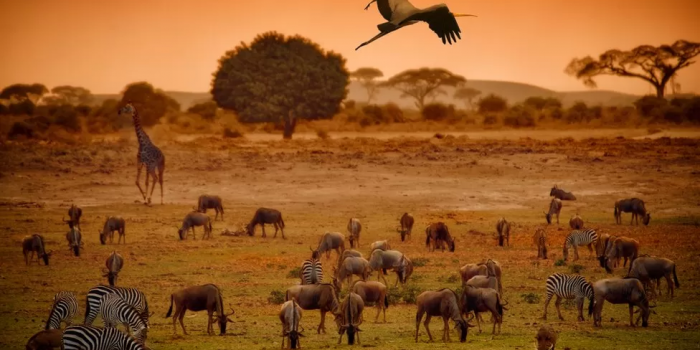The world’s landscapes and all the animals they support, from the lush Amazon rainforest to the freezing Arctic Ocean, are under threat. According to UN experts, the world must set aside a third of all land and marine territories to safeguard them.
The call is essential to the global agreement being hammered out this month at the United Nations Conference on Biodiversity in Montreal. If agreed at the summit’s close next week, governments will be pledging to set aside 30% of their land and sea territories for conservation by 2030, more than doubling the amount of land area and more than tripling the amount of ocean territory already under conservation.

More than 100 countries, including Canada, the United States, and France, have supported the 30-by-30 goal.
“Protecting our land and seas also allows degraded ecosystems to recover, to start functioning in a way that benefits society,” says Prof Mark Emmerson of Queens University, Belfast.
Preserving and repairing healthy wetlands and forests, which store greenhouse gas emissions, can assist humanity in dealing with climate change.
“Healthy ecosystems can lock up carbon and contribute to our climate mitigation targets if we give them the space to do so – in this respect, the climate and biodiversity crises are flip sides of the same coin.”

Proponents claim that the goal is critical to correcting ecological damage. More than a million species are currently threatened with extinction, while the worldwide insect population is declining at a rate of up to 2% per year, and almost 40% of the world’s remaining plant species are endangered.
However, as with science-based policy, the details matter in determining whether a 30% worldwide conservation objective can save the world’s endangered species and locations.
“The danger, as with all these sorts of events populated by politicians, is they want a simple number,” said Stuart Pimm, a biologist at Duke University.
“They would like to be able to leave Montreal and say we’re going to protect 30pc of the planet. But that alone is not enough.”
This vital issue eventually comes down to quantity vs. quality.

According to experts, there is no compelling scientific evidence to support 30 percent as the threshold for preventing species extinction. In fact, depending on which areas are chosen, it might take a considerably larger or smaller amount of land or sea. Therefore, “30% is neither necessary nor sufficient,” Pimm stated. “If we do things correctly, we protect the majority of biodiversity by being smart and protecting the areas that matter.”
There is a desire, he says, to save enormous swathes of land that are already sparsely populated yet have little biodiversities, such as the Arctic tundra or the Saharan desert.
However, it is critical to safeguard areas with a high diversity of species, known as biodiversity hot spots, even if they are more challenging to conserve due to the presence of people or extractive industries.
Safeguarding tiny swaths of land and sea, such as Australia’s Great Barrier Reef or the Andes mountains, can yield significantly greater rewards than protecting wide stretches of prairie.
According to a study published in the journal Science in June 2022, at least 44 percent of global land area would be required to safeguard places with high species diversity, avoid the loss of intact ecosystems, and enhance the representation of different landscapes and species. But these areas are home to about 1.8 billion people.

However, co-author Hugh Possingham, a researcher at the University of Queensland, stated, “while there is nothing magical about 30% targets, they help focus nations’ attention.”
“I consider 30% as a reasonable aim that most countries may reasonably attain by 2030,” he added, noting that certain countries, such as Bhutan, had already met this target.
A critical point that emerged in the 30-by-30 debate at COP15 is whether the target should be carried out globally or at a national level. And if it is done globally, another point of contention is how to divide the globe.
Wherever the preservation and recovery are made, these protected areas must be efficiently managed. In other words, it’s not just about how much of the land and sea is protected but what is allowed to happen in these areas.
Designing significant natural areas will be difficult, but it is critically necessary.
Speaking to the BBC at the biodiversity conference, the head of the UN Environment Programme, Inger Andersen, also underlined that the biodiversity accord “deals explicitly with nature’s contribution to the impacts of climate change.”


